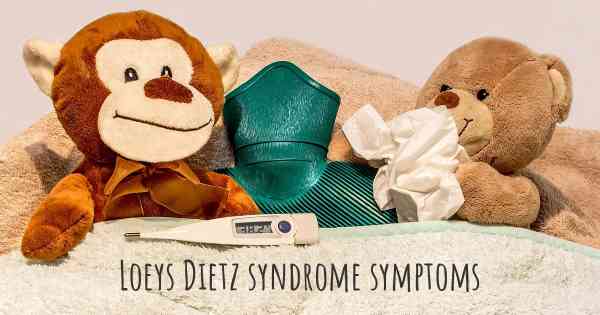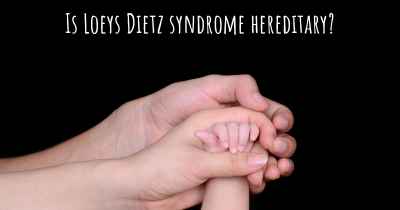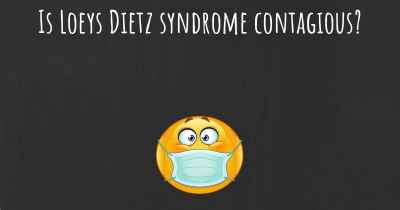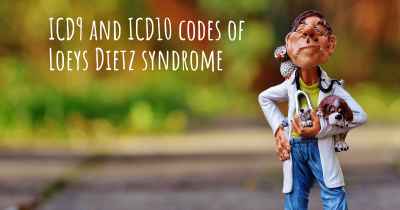1
Which are the symptoms of Loeys Dietz syndrome?
See the worst symptoms of affected by Loeys Dietz syndrome here

A bifid uvula, tortuous arteries, high palate, aortic root and valve issues are some of the key traits of Loeys-Dietz Syndrome or LDS.
Posted Feb 6, 2018 by Helene 1600
Vary greatly. Mine is severe arthritis, and muscle, joint and tendon pain (common with connective tissue disease) Also common is arterial dissection. Waiting on an echo cardiogram and CTA to check for aneurisms.
Posted May 12, 2019 by Sherri 800
Copied from loeysdietz.org
Four main characteristics suggest the diagnosis of LDS. These features are not usually seen all together in other connective tissue disorders as major characteristics. These symptoms include:
Aneurysms (widening or dilation of arteries), which can be observed by imaging techniques. These are most often observed in the aortic root (base of the artery leading from the heart) but can be seen in other arteries throughout the body
Arterial tortuosity (twisting or spiraled arteries), most often occurring in the vessels of the neck and observed on imaging techniques
Hypertelorism (widely spaced eyes)
Bifid (split) or broad uvula (the little piece of flesh that hangs down in the back of the mouth)
It is important to note, however, that these findings are not observed in all patients and do not concretely lead to a diagnosis of LDS.
Categorized by system, below is a more detailed list of symptoms recorded in individuals diagnosed with Loeys-Dietz syndrome:
Craniofacial (head and face)
Malar hypoplasia (flat cheek bones)
Slight downward slant to the eyes
Craniosynostosis (early fusion of the skull bones)
Cleft palate (hole in the roof of the mouth)
Blue sclerae (blue tinge to the whites of the eyes)
Micrognathia (small chin) and/or retrognathia (receding chin)
Skeletal (bones)
Long fingers and toes
Contractures of the fingers
Clubfoot or skewfoot deformity
Scoliosis (s-like curvature of the spine)
Cervical-spine instability (instability in the vertebrae directly below the skull)
Joint laxity
Pectus excavatum (chest wall deformity that causes the sternum and breast bone to grow inward) / Pectus carinatum (chest wall deformity that pushes the sternum and breast bone out)
Osteoarthritis
Typically normal stature
Skin
Translucent skin
Soft or velvety skin
Easy bruising
Abnormal or wide scarring
Soft skin texture
Hernias
Cardiac
Congenital (existing at birth) heart defects, which can include patent ductus arteriosus (PDA), atrial or ventricular septal defect (ASD/VSD) and bicuspid aortic valve (BAV)
Ocular
Myopia (nearsighted)
Eye muscle disorders
Retinal detachment: The retina is the light-sensitive layer of tissue that lines the inside of the eye and sends visual messages through the optic nerve to the brain. When the retina detaches, it is lifted or pulled from its normal position. If not promptly treated, retinal detachment can cause permanent vision loss.
Other
Food or environmental allergies
Gastrointestinal inflammatory disease
Hollow organs such as intestine, uterus and spleen prone to rupture
Four main characteristics suggest the diagnosis of LDS. These features are not usually seen all together in other connective tissue disorders as major characteristics. These symptoms include:
Aneurysms (widening or dilation of arteries), which can be observed by imaging techniques. These are most often observed in the aortic root (base of the artery leading from the heart) but can be seen in other arteries throughout the body
Arterial tortuosity (twisting or spiraled arteries), most often occurring in the vessels of the neck and observed on imaging techniques
Hypertelorism (widely spaced eyes)
Bifid (split) or broad uvula (the little piece of flesh that hangs down in the back of the mouth)
It is important to note, however, that these findings are not observed in all patients and do not concretely lead to a diagnosis of LDS.
Categorized by system, below is a more detailed list of symptoms recorded in individuals diagnosed with Loeys-Dietz syndrome:
Craniofacial (head and face)
Malar hypoplasia (flat cheek bones)
Slight downward slant to the eyes
Craniosynostosis (early fusion of the skull bones)
Cleft palate (hole in the roof of the mouth)
Blue sclerae (blue tinge to the whites of the eyes)
Micrognathia (small chin) and/or retrognathia (receding chin)
Skeletal (bones)
Long fingers and toes
Contractures of the fingers
Clubfoot or skewfoot deformity
Scoliosis (s-like curvature of the spine)
Cervical-spine instability (instability in the vertebrae directly below the skull)
Joint laxity
Pectus excavatum (chest wall deformity that causes the sternum and breast bone to grow inward) / Pectus carinatum (chest wall deformity that pushes the sternum and breast bone out)
Osteoarthritis
Typically normal stature
Skin
Translucent skin
Soft or velvety skin
Easy bruising
Abnormal or wide scarring
Soft skin texture
Hernias
Cardiac
Congenital (existing at birth) heart defects, which can include patent ductus arteriosus (PDA), atrial or ventricular septal defect (ASD/VSD) and bicuspid aortic valve (BAV)
Ocular
Myopia (nearsighted)
Eye muscle disorders
Retinal detachment: The retina is the light-sensitive layer of tissue that lines the inside of the eye and sends visual messages through the optic nerve to the brain. When the retina detaches, it is lifted or pulled from its normal position. If not promptly treated, retinal detachment can cause permanent vision loss.
Other
Food or environmental allergies
Gastrointestinal inflammatory disease
Hollow organs such as intestine, uterus and spleen prone to rupture
Posted May 12, 2019 by Derek 4050
Arthritis, connective tissue disorders, aneurysms, Scoliosis, Hernias, blue tinge to whites of eyes, asthma, long limbs, deviated septum etc.
Posted May 14, 2019 by Glenn 2500
Aortic dissection
Spinal defects
Spondolythesis
scoliosis
Cervical spine issues
Osteoporosis
Get rid of the aortic dissection because it is immediately life threatening and surgical repair leads to disabilities that alter the patient life or the rest of their life
Spinal defects
Spondolythesis
scoliosis
Cervical spine issues
Osteoporosis
Get rid of the aortic dissection because it is immediately life threatening and surgical repair leads to disabilities that alter the patient life or the rest of their life
Posted May 15, 2019 by Vicki 1800








